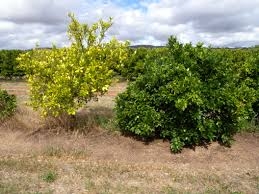
Posts Tagged: feeding
Example of a Paper Presented at International Citrus Conference
What this means is that there is different feeding behavior on different scion varieties that is unaffected by the rootstocks used in this study. This does not mean "a" rootstock can not have an effect, just that the ones used in this trial did not.
EFFECT OF DIFFERENT CITRUS SCION AND ROOTSTOCKS
COMBINATION ON FEEDING OF Diaphorina citri
Alves GA1, Beloti VH1, Carvalho SA2 & Yamamoto PT1
1Escola Superior de Agricultura ‘Luiz de Queiroz'/
Universidade de São Paulo, Piracicaba, SP, Brazil; 2Instituto
Agronômico (IAC), Centro de Citricultura, Cordeirópolis, SP,
Brazil; e-mail: gralves@usp.br
The Asian citrus psyllid (ACP) is the vector of bacteria associated to the huanglongbing and has a host range of more than 50 species of the Rutaceae family. The knowledge about the feeding behavior in different hosts can show useful aspects for future studies of plant resistance and ACP management. Therefore, was evaluated the effect of different combinations of scion and rootstock of citrus in the feeding of ACP adults. For this, we tested Valencia, Pera and Hamlin sweet orange, Ponkan mandarin and Sicilian lemon grafted on Rangpur lime and Sunki mandarin rootstocks.
The flushes were individualized with cages made of transparent plastic cup and “voile” tissue. To collect the honeydew, discs of filter paper were placed at the base of each flush. The adults fed for a period of 72 h. After this, the discs were removed and immersed on the ninhydrin solution. After 24 h, the drops area of honeydew was determined using the Quant software. The feeding was more intense on sweet orange varieties, with a highest value observed to Valencia (0.902 cm2) and the smaller area to Ponkan mandarin(0.269 cm2). Unlike observed for scion varieties, when different rootstocks for the same scion variety were tested, no difference was observed in the consumption of ACP.
Rootstocks can have a tremendous effect, but not in this case with the rootstocks used

rootstock effect
